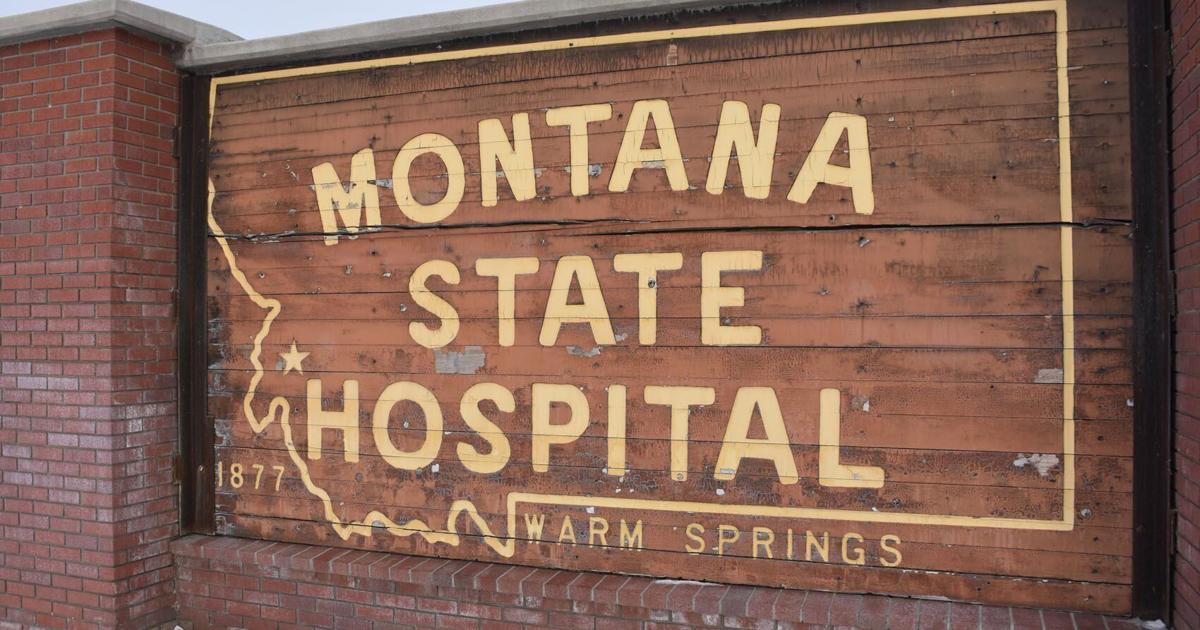
Top Montana health officials made their pitch to legislators this week for a new behavioral health facility in the eastern part of the state, an attempt to right the ship after what’s been a rocky rollout that’s left many searching for clarity.
Charlie Brereton, director of the Department of Public Health and Human Services, told legislators Tuesday at an interim committee meeting that his team is focused on a 32-bed forensic facility for criminal defendants in need of psychiatric treatment and eyeing Billings or Laurel as the future home of the site, but “no decisions have been made.”
It was the first time lawmakers had the chance to weigh in publicly on plans for the much-needed mental health facility that’s expected to resemble the role of the Montana State Hospital in Warm Springs. While most people agree the state needs more behavioral health resources, the placement of treatment options has been more hotly contested.
Some legislators expressed frustration at what they said felt like a foregone decision that the facility would be built in Yellowstone County. Others questioned why the process so far appeared to lack public input and proper coordination between DPHHS and the Board of Investments (BOI).
“I don’t want to be argumentative about it, but there are a lot of ways you could look at it,” said Rep. Bill Mercer, R-Billings.
Montana has long been in dire need of more space to house people suffering from severe psychiatric disorders. There’s a particular dearth of forensic beds, used to treat individuals charged with a crime but determined by a judge to be mentally unfit to stand trial, or those found guilty of a criminal offense but who are too mentally ill to be sentenced to prison.
The waitlist at Galen, the state’s forensic facility in Warm Springs, averages 100 people a day. In what’s been described by mental health experts as a crisis, criminal defendants often languish in jails without proper treatment while they await placement.
“We do not see any lessening of this demand in the future. We see it increasing over time,” said Doug Harrington, state medical officer at DPHHS. “Having another facility is going to be mandatory.”
Legislators set aside $300 million in 2023 to close gaps in the state’s hobbled behavioral health care system. Nearly $27 million of that was directed by the 2025 Legislature toward growing the number of state-run forensic beds in the form of a second facility.
It was apparent throughout the session that DPHHS and some lawmakers preferred the new beds be housed in eastern Montana, where law enforcement officials and mental health providers contend with hours-long drives on short notice to transport someone to Warm Springs when a spot opens up.
“At the end of the day, I can’t stress how important it is to have another facility here in Montana and allow us to distribute it around the state a little bit more,” Harrington said.
But House Bill 5, the legislation that allocated the $27 million to BOI to oversee the build-out, includes no mention of geography. The bill also offers no specifics on what types of people should be served there, calling only for a “behavioral health facility.”
Separate legislation was brought that would have required the new location to be placed east of Big Timber. That bill failed to pass. Another measure sought to address the bottleneck at the state hospital by prohibiting criminal defendants found guilty from being sentenced to time at Galen. That bill also failed.
“The Legislature had a chance to say that it wanted a predetermined location, and it specifically rejected that,” Mercer said. “I hope that there is an open mindedness in terms of where you all are looking.”
It is in this grey area between what the legislation explicitly requires and what the health department and Board of Investments — a financial vehicle that invests state money, not a behavioral health entity — see as necessary where confusion has festered.
BOI paused its efforts last month after pushback from Billings and Yellowstone County, saying it needed more clarity from the Legislature and Gov. Greg Gianforte’s administration. Gianforte just last week directed state officials to resume the planning process.
Brereton chalked the back-and-forth up to “preliminary, natural and normal planning” and stressed that BOI leadership has been “one hundred percent deferential” to DPHHS in the details.
Also absent in the legislation is a deadline for the construction of the forensic facility or checkpoints along the way. DPHHS officials said there’s no sign of the need slowing, but it could take years for the project to be completed.
In the meantime, they’ll have to do a lot of work to get the community on board — wherever the facility lands.
“It scares a lot of people to have a forensic facility in their neighborhood,” Harrington said. “No doubt about it.”
Carly Graf is the State Bureau health care reporter for Lee Montana.
Love
0
Funny
0
Wow
0
Sad
0
Angry
0
Get Government & Politics updates in your inbox!
Stay up-to-date on the latest in local and national government and political topics with our newsletter.
* I understand and agree that registration on or use of this site constitutes agreement to its user agreement and privacy policy.
Carly Graf
State Bureau Health Care Reporter
Get email notifications on {{subject}} daily!
Your notification has been saved.
There was a problem saving your notification.
{{description}}
Email notifications are only sent once a day, and only if there are new matching items.
Followed notifications
Please log in to use this feature
Log In
Don’t have an account? Sign Up Today



